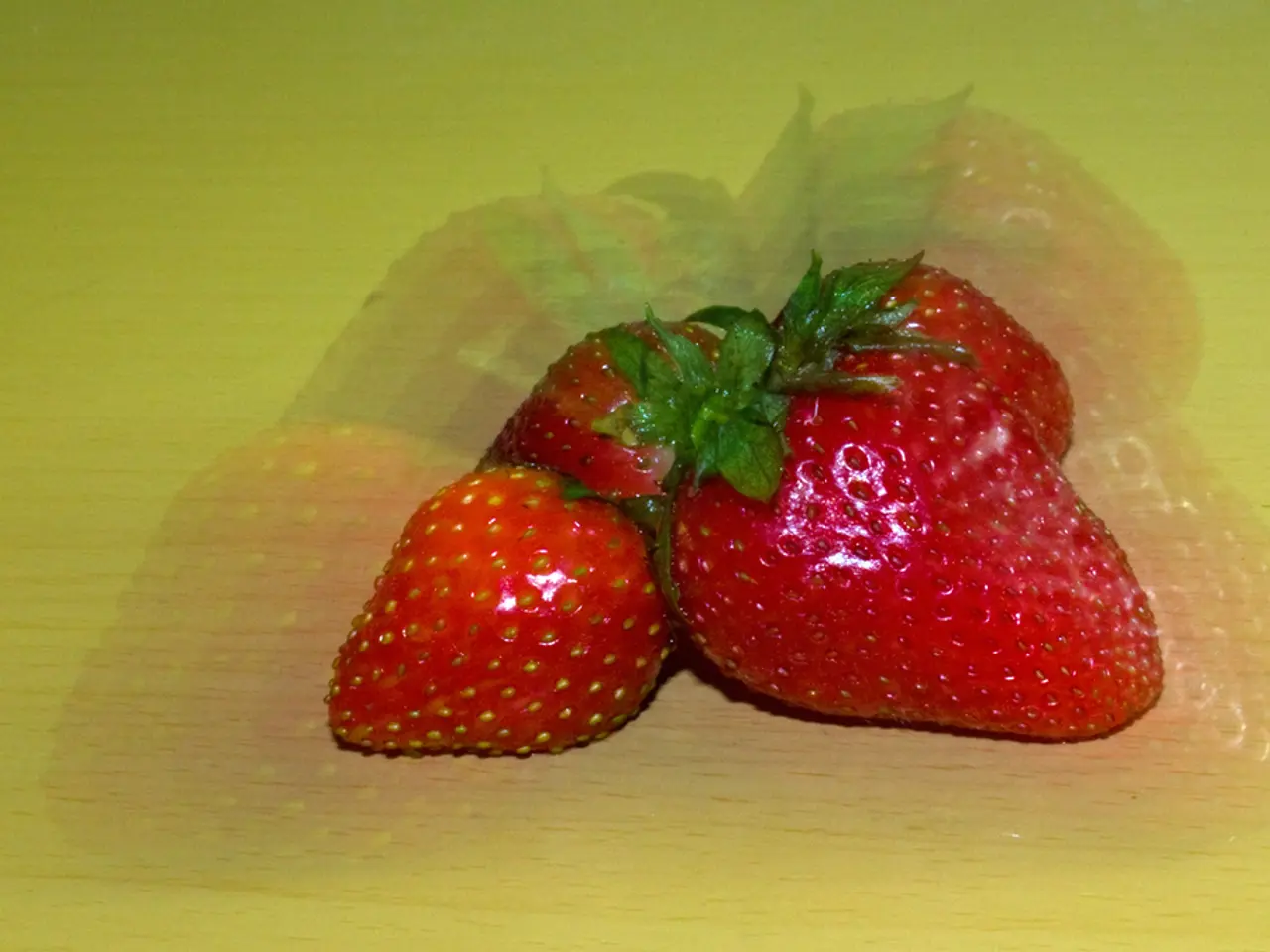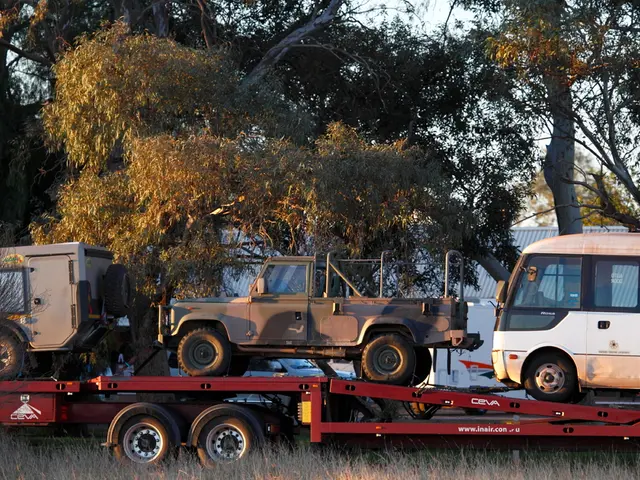Revolutionizing Strawberry Farming: The Rise of AI Harvesting Robots
Automation of farming through robotics for crop yield enhancement
The world of strawberry farming is witnessing a significant shift, as advancements in artificial intelligence (AI) technology are making strides in the development of autonomous harvesting robots. This innovation, currently being tested on the strawberry farm Glantz in Hohen Wieschendorf, Mecklenburg-Vorpommern, has the potential to reshape the global strawberry industry.
Pioneering AI Harvesting Robots
- The Organifarms' BERRY Robot is one such innovation. Equipped with smart image recognition, this robot can pick strawberries automatically, marking a significant leap in the automation of strawberry harvesting.
- Saga Robotics' Thorvald, while primarily focused on treating fungal diseases like powdery mildew using UV-C light, could potentially be integrated into future harvesting systems. The technology developed by Saga Robotics could improve crop health and reduce chemical use, reflecting a broader trend in agriculture.
- TRIC's Luna Robot uses UV light for disease treatment and can be adapted for tasks like pest control. The adaptability of this robot underscores the potential for automation to address labor and chemical challenges in agriculture.
The Impact on Production Costs and Labor Demands
The automation of harvesting and disease management tasks promises to reduce labor costs, a substantial part of strawberry production expenses. By maintaining or increasing yields while automating these tasks, farmers can save on labor while potentially increasing efficiency.
The reduction in labor demands is particularly beneficial in regions facing labor shortages or high labor costs. The potential for these innovations to spread globally could lead to increased efficiency and reduced production costs across the world's strawberry markets.
The Future of AI Harvesting Robots
While the robot named SHIVAA is designed for open-field strawberry cultivation, unlike most other autonomous harvesting robots which primarily operate in greenhouses, several years of development are required before it can be mass-produced.
SHIVAA is capable of operating at night to avoid harvest losses and maintain the quality of the fruits. It navigates along rows of plants and picks ripe fruits with gripping arms, harvesting approximately 15 kilograms of fruit per hour. The technology developed for SHIVAA could potentially be applied to the harvesting of other fruit varieties in the future.
Jan van Leeuwen, the manager of strawberry farm Glantz, is optimistic about the project, given the growing economic pressure and high labor costs, which account for about 60% of production costs. The involvement of the German Research Center for Artificial Intelligence (DFKI) in the development of SHIVAA further underscores the promise of this technology.
As the development and deployment of AI harvesting robots for strawberries continue to progress, the industry stands on the brink of a transformation that could decrease labor costs, improve efficiency, and enhance crop protection, with potential positive impacts on global strawberry production.
[1] Organifarms. (n.d.). BERRY Robot. Retrieved from https://www.organifarms.com/berry-robot
[2] Saga Robotics. (n.d.). Thorvald. Retrieved from https://www.sagarobotics.com/thorvald
[3] Saga Robotics. (n.d.). Thorvald UV-C. Retrieved from https://www.sagarobotics.com/thorvald-uv-c
[4] TRIC. (n.d.). Luna Robot. Retrieved from https://tric-agrobotics.com/luna-robot
[5] AgFunder News. (2020, July 22). Meet the German AI-Driven Harvesting Robot for Open-Field Strawberries. Retrieved from https://agfundernews.com/meet-the-german-ai-driven-harvesting-robot-for-open-field-strawberries/
- The adoption of a proposal for a regulation on the introduction of a system of taxation of the value of agricultural products, such as the one on strawberries, could potentially impact the profitability of farms employing AI harvesting robots, considering the initial high technology investment and potential savings in labor costs.
- As the advancements in artificial intelligence (AI) technology continue to reshape the agricultural sector, the future lifestyle and food-and-drink preferences might lean towards moretechnologically-produced, high-quality, and consistency-guaranteed products, making AI-assisted farming a standard practice in the industry.




